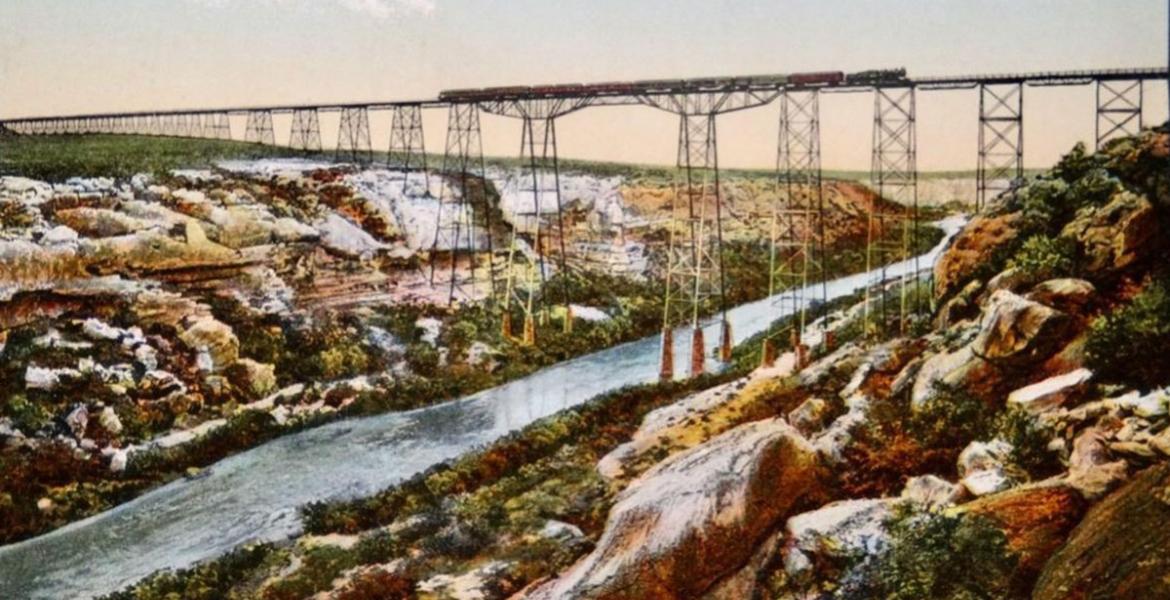OPINION — The San Angelo ISD Board of Trustees wants its citizens to consider increasing the district’s debt by $148.9 million to build new facilities and to rehab other facilities. The major projects proposed include a brand new McGill Elementary School building and three additional elementary schools to be more than 80 percent rebuilt. The McGill building is estimated to cost at least $22 million alone. Also included is a $31 million multi-purpose gymnasium building for Central High School. A new alternative education campus is also proposed. (for the full list of projects with estimated costs, see this news story).
Yantis Green, editor-in-chief of San Angelo LIVE! and Joe Hyde, Publisher, have teamed up to provide two sides on the bond issue. Yantis is against it. Joe is for it. These two editorials examine the issue with the intent to inform our readers. Early voting is underway April 23. The election to approve the bond is May 5.
Against the Bond
by Yantis Green
OPINION — The San Angelo Independent School District’s $148.9 million bond proposal includes an ambitious list of projects in a sweeping, district wide facelift of many schools and major additions to others, but opposition to the huge price tag is growing.
Conservative groups have voiced their opposition and there is a Facebook group called “Stop Taxing Us San Angelo,” which urges voters to vote no to the $148.9 million bond, no to a 12 percent tax increase, (we are) still paying the 2008 bond, “We’re taxed out,” “Kids need education, not debt,” and “improve education first.”
On the San Angelo ISD bond website under High Schools, the bond will provide $30 million for Central High School and only $3 million for Lake View.
In fact, the Central Freshman campus is slated for $4.9 million and the alternative learning center will get $4.4 million.
Then there is the impact on the taxpayer. For example, a modest sized home in College Hills was appraised at $55,600 in 2013 and was appraised for $87,480 in 2017 with no improvements. The property tax impact on that home will be an additional 12 percent.
Similarly, a modest home in Southland appraised for $122,000 in 2013 and now is appraised at $142,620 with no improvements. The property tax on that home will also be an additional 12 percent.
According to the bond website, the median price for a home in the district is $154,000 and the property tax will increase by $15.32 per month or $183.84 per year.
If you want to know what your property tax is now, check out the Tom Green County Appraisal District website here.
In developing the bond issue, the San Angelo ISD conducted a survey that among other things, measured the support for passing a bond based upon the amount. The question asked if a person would support a $100 million bond, a $150 million bond, or a $180 million bond. Results indicated 24 percent strongly supported a $100 million bond while 35 percent strongly opposed it.
There was 15 percent strong support for a $150 million bond and 50 percent who strongly opposed that one. And there was only 13 percent strong support for a $180 million bond while 57 percent strongly opposed a bond of that size. So the bond committee recommended a $150 million bond and then selected projects to fit within that amount.
The San Angelo ISD board of trustees voted unanimously to call for a bond election and began a program promoting the bond issue including purchasing advertising and handing out yard signs.
In recent years, the San Angelo ISD board of trustees eliminated the local optional homestead exemption and hasn’t paid off the 2008 bond. There is still over $94 million remaining on that bond which taxpayers must pay off. Tax appraisals have continued to rise due to pressure from the Texas Comptroller’s office on local tax appraisal districts.
And the legislature has put pressure on Counties to pay for core mandatory services like law enforcement and the court system. In fact, Tom Green County Commissioners in 2017 increased the County portion of the tax rate by 10.6 percent and will have to add to that to cover $8 million in bonds for the new jail.
Property Tax rates are so high in Texas that property tax relief is now a top priority of the governor and the legislature.
Now is not the time for any taxing entity to ask voters for a 12 percent increase in property taxes.
For the Bond
by Joe Hyde
OPINION — A big number like $148.9 million sounds scary. How does a voter approach it? My purpose here is not intended to convince you to vote for the bond, though after much thought, I am for it. I have heard every argument for or against because it was my job, so I had time to consider the pros and cons.
Reasons to not support the bond do not rise to the level to convince me not to vote for it. Here is an examination of the anti-bond rhetoric.
1. San Angelo ISD schools are state-run monstrosities and we shouldn’t spend another dime on public schools
Whatever your political persuasion, left, right, or libertarian, the way Texas runs its education system is not up for election May 5. You cannot change a system that is perpetuated by the State, and has been for over a century, without action by the Texas Legislature. Even packed with Republican leadership for 20 years, the Texas Legislature hasn’t dramatically changed the rules of the game.
With that being said, the Concho Valley has de facto school choice. All of the outlying smaller school districts, from Veribest to Irion County compete for our kids to go to their schools. In addition, we have a charter school, TLCA. Any parent can apply to enroll their child in any of the dozen choices other than the San Angelo ISD.
Since the game rules are set and none can be changed by this bond election, San Angelo, as a community of citizens, will decide if the school district is allowed to build new facilities it likely needs.
2. New School Buildings Don’t Generate Good Student Performance
The loudest anti-bond argument is spending more money on a campus facility results in lower academic performance (or score). The argument is made using data aggregation results from a website called “School Digger.”
Yet, the analysis of the data by anti-bond advocates is incomplete because it fails to provide the full picture, or context, such as comparing San Angelo ISD to similar districts.
Here are some examples. School Digger ranks San Angelo ISD 583rd of 933 Texas school districts. Abilene ISD is ranked nearby at 543rd. Dallas ISD is 616th, Houston ISD 586th, Southlake Carroll is #1. Wall ISD is #7 and that district just approved a big bond. If you trust the premise that more money means declining performance, it’s time to get your kids out of Wall High.
Ranking schools is problematic, especially if the comparison is made over 10 years, as the anti-bond advocates have done, because the standardized testing is re-created every three years. I could go into the more recent A-F scoring system that gave every school in Texas an F, or whatever rating system is in place today. Then, I’d conclude explaining how the TEA testing obfuscates comparable snapshots from laymen like me.
I’m more concerned about SAT and ACT scores to get kids into good colleges. Southlake Carroll, the high school in School Digger’s #1 ISD in Texas, is #16 for SAT/ACT scores; a high school in #616 Dallas ISD has the highest SAT/ACT scores. Wall High, the only high school in School Digger’s #7 Wall ISD, is not in the top 50. But neither are any other schools in the region.
The School Digger argument is silly because the data is poor and the analysis is incomplete and uninformative. If you sincerely believe old, falling apart school facilities generate better academic performance, don’t vote for the bond.
3. The San Angelo ISD mismanaged the 2008 bond. Don’t give them another dime
The projects promised with the $117 million bond in 2008 were completed on time and on budget. That’s the truth. But what about that silly copper roof at the Central High main building?
School Board Trustee Dr. Taylor Kingman, MD said the copper roof was all he heard when he was elected to the school board in 2017. He said he looked into it because he didn’t want to commit that mistake again.
Kingman said he found the cost of the roof “upgrade” to copper was minimal and it reduced the total roof maintenance costs over the roof’s lifetime.
The whole answer is, the 2008 bond was completed on time and on budget and they even upgraded the quality of Central High’s roof with copper.
4. My property taxes are going up and it will never end
The Tom Green County Appraisal District is the bogeyman in the bond discussion. Even if the tax rates are falling or remain the same, we all feel our gross amount of taxes owed will be higher and higher every year because our property values are headed up rapidly. That is the perception.
One of the loudest anti-tax, anti-bond guys on Facebook was complaining about his taxes going up over the weekend. I caught him telling a fib. Let me explain.
Every taxing entity has kept their tax rate the same, or lowered them, since 10 years ago, with one exception. The school district has lowered its tax rate about 10 cents since 2008. The only tax increase was the county’s 2017 hike to pay for the criminal justice system here. The impact to your total property tax bill from the county hike was minimal.
Therefore, the Facebook anti-bond guy’s property tax increase had to come from a rising property valuation on his home. It turns out, his home value hasn’t changed in 5 years. For equality, I looked up my home. My home’s appraised value went down $4,000 last year. The point is, a loud anti-bond guy didn’t know he was actually paying lower taxes, but was complaining about high property taxes anyway.
How high our appraisal district increases our property values is mandated by the State to be within 97 percent of State-audited values. This is a huge problem for passage of the bond because who knows how high they’ll appraise your property this year.
Consider the risks, but consider the risks using your data, not listening to blowhards on Facebook. Look up your properties on the Tom Green County AD website and see if you think you can afford the bond.
5. The school administrators make too much pay, depriving us of money to build better schools out of cash flow instead of debt
Dr. Carl Dethloff, San Angelo ISD Superintendent of Schools, who oversees 15,000 students, is paid $194,820 per year. His counterpart in Abilene ISD, enrollment 17030, is paid $210,000 annually. Katy ISD’s Superintendent Lawrence Hindt is paid $341,912 to oversee an enrollment of 75,428.
Now that salaries are out of the way, let’s talk saving money over time instead of borrowing money for new facilities. You can’t do it because the State laws don’t accommodate it. Let me explain.
The State of Texas monitors the M&O portion of the school district’s budget on a per pupil basis. It’s called the Robin Hood law, or officially, Chapter 41 Wealth Equalization. San Angelo ISD's property values don't rise to the level that would put us at risk of Robin Hood confiscation. But even so, if our district taxed the M&O tax component at the maximum rate hoping to build a large fund balance to pay for new construction, the district will never raise enough money to handle all of the infrastructure needs. Generally, in 2018, a new elementary school costs around $25 million.
The State of Texas caps the M&O rate for all school districts (with some exceptions in other areas of the state) at $1.17 per $100. Our district is currently at $1.04 per $100 for its M&O tax rate. That means to tax at a higher rate to save for building new facilities, we only have $0.13 more tax rate available. That will not raise enough money fast enough to pay for the $148.9 million in infrastructure needs the school board says we have.
The bottom line is the rules of the school finance game, as set forth by the Texas Legislature, do not offer options to pay-as-you-go. The built-in mechanism for building infrastructure is to increase the Interest & Sinking, or I&S, portion of the school property tax. According to the TEA, “the I&S tax rate provides funds for payments on the debt that finances a district's facilities.”
The only way to build new buildings is to increase the I&S portion of the school district’s property tax rate with voter approval for bonds, or long-term debt, to pay for them.
Yet, our school board, over the past 10 years, has accomplished two major feats simultaneously. First, through refinancing the existing debt and accomplishing other efficiencies, the district has lowered the overall tax rate about $0.10 per $100. Second, even while doing so, the district has scraped $3 million per year, about $30 million total over 10 years, to build small and medium-sized infrastructure projects, such as adding classrooms at Glenn Middle School.
The San Angelo ISD didn’t write the rules, but we as a community have to abide by them. Even so, the district leadership has managed to complete $30 million in infrastructure projects while decreasing the overall tax rate. Now the district desires to address much larger infrastructure issues. Approving the bond is the only way our school district can obtain enough cash to build large projects.
Approval of the bond will increase the San Angelo ISD's overall debt from $105 million to $254 million. The debt will likely be refinanced into new debt instruments at around a 4.25 percent annual percentage rate or lower. All of the debt will retire in 2044. The tax rate will increase from $1.21 per $100 to $1.3525 to pay for the new debt.
---
Updated for clarity - San Angelo ISD is not vulnerable for Robin Hood general fund confiscation like Midland ISD is. We have updated the piece to reflect that.
Subscribe to the LIVE! Daily
Required






Comments
Listed By: B P
Wondering how Joe Hyde's appraised value went down over the last year. Ours jumped over $38,000 from 2013 - 2016 and stayed the same in 2017...not only have we made no improvements to our home, overall, our neighborhood is becoming less and less attractive in the area of curb appeal. We are reaching retirement age, which means fixed income and do not want to face increasing taxes each year.
- Log in or register to post comments
PermalinkListed By: concerned citizen
before you go cast your votes, go do some research.
- Log in or register to post comments
PermalinkI'm for it. Our education is based on the fabric of good infrastructure and cities who are willing to push a better future on our children. Everyone in opposition are literally only caring about their own benefit--"How will this increase MY taxes?" "How will this affect MY value?" "How will this help MY future?" and that is the worst possible viewpoint to have.
Better buildings and better wages can only help our education. Education is the cure to our crumbling future, despite your political preference. Anyone in opposition to education of fact-based and science-based learning should not have a say in said Education. Don't hurt the kids' education because of your selfish mindsets, they didn't do anything to you.
By the way--they use MacBooks because of the benefits Apple offers to students. They get a huge discount, so they didn't cost as much as people think. The products on the Mac computers help teachers perform better in their education--this is why Central is one of the top rated schools in the state. Don't take that away from the kids.
- Log in or register to post comments
PermalinkListed By: B P
but not about how it benefits ME. but how it will stretch our already tight budget. The fact is that many on fixed incomes are already feeling a pinch and ever-increasing taxes make it much harder for seniors to maintain their homes.
- Log in or register to post comments
PermalinkPost a comment to this article here: